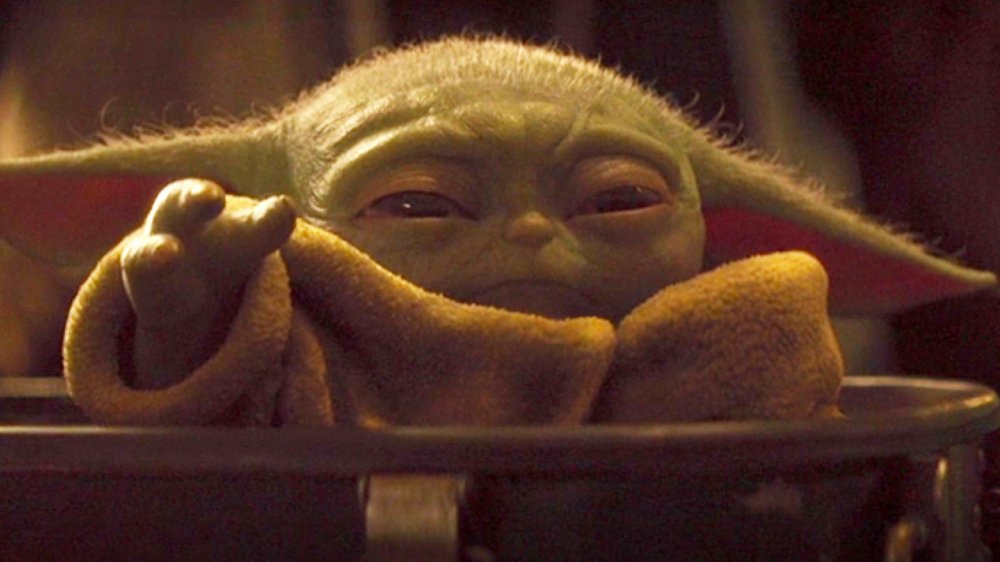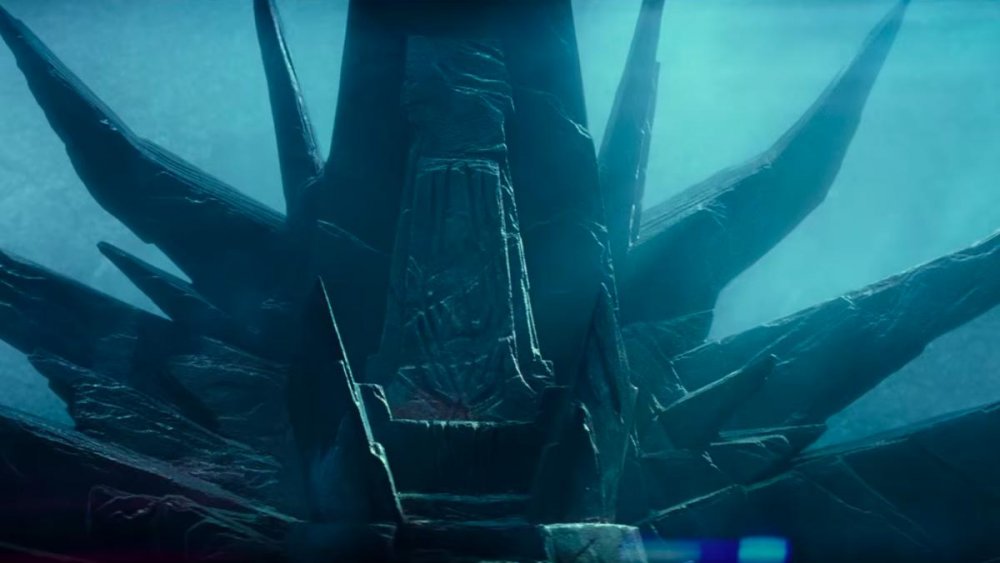How The Mandalorian And The Rise Of Skywalker Are Connected
Contains spoilers for The Mandalorian and The Rise of Skywalker
If you guessed that the latest episode of The Mandalorian might help set up Star Wars: The Rise of Skywalker, then congratulations — you were right.
While new episodes of the live-action Star Wars series The Mandalorian typically drop on Disney+ on Friday mornings, chapter 7, "The Reckoning," debuted on Wednesday, December 18, two days before the official premiere of the Skywalker saga's final entry. To most people, it looked like Disney was simply trying to leave Friday clear so that Star Wars fans could spend their evenings in the theater. However, some members of the audience suspected that The Mandalorian chapter 7 would also establish some groundwork the latest Star Wars feature film, hence is why it was released early. As it turns out, that actually was the case. The Mandalorian has a small but very clear link to The Rise of Skywalker that helps set up one of the film's biggest twists.
(Spoilers for both The Mandalorian and The Rise of Skywalker follow.)
On "The Reckoning," the Mandalorian (Pedro Pascal) re-teams with former Rebel shocktrooper Cara Dune (Gina Carano), the wise old Ugnaught Kuiil (Nick Nolte), reprogrammed murder-droid IG-11 (Taika Waititi), and the head of the bounty hunter's guild, Greef Karga (Carl Weathers), to take out the Client (Werner Herzog) once and for all. They plan to use Baby Yoda (otherwise known as the Child) as bait to get close to the Client, and then kill the man as soon as they get the chance.
While traveling across Navarro to the Client's headquarters, the group stops to rest for the night. As they sit around a campfire, our heroes are attacked by a band of flying mynocks, bat-like creatures notorious for their energy-draining capabilities. A couple of extras bite the dust, and Greef Karga is mortally wounded. We soon learn that our band of rogues and misfits is short on medpacks, and Karga's fate seems all but sealed. That's when Baby Yoda steps in. The youngling lays a hand on Karga's injured arm and heals the wound using the power of the Force. That's not a specific Force power we've seen in the Star Wars franchise thus far — at least not in this way. When Baby Yoda touches the Greef Karga's arm, we see the injury simply disappear. Force healing has appeared in some video games and old "Legends" novels, but those haven't been considered canon since Disney bought Lucasfilm in 2012.
And this is where The Mandalorian's link to The Rise of Skywalker comes in. Without going too far into spoiler territory, Force healing actually plays a major role in The Rise of Skywalker. The fledgling Jedi Rey (Daisy Ridley) has somehow acquired the ability between the events of The Last Jedi and The Rise of Skywalker, and uses it numerous times throughout the film. The Mandalorian, which takes place about 30 years before The Rise of Skywalker, is there to set a precedent. Thanks to The Mandalorian, we know this isn't actually a new Force power. It's decades old at least, even if it's only accessible to the most powerful Force users.
Could Force healing be the key to Palpatine's return?
There's also a precedent for Force healing in the Star Wars movies — but only sort of. In Revenge of the Sith, soon-to-be-Emperor Palpatine (Ian McDiarmid) delivers an infamous speech about Darth Plagueis the Wise, his former Sith master. Plagueis was obsessed with immortality, Palpatine says, and discovered a way to use the Force to keep his loved ones from dying. He also passed his knowledge to his apprentice before he died, meaning that Palpatine himself knows how to use the Force to cheat death.
That's basically what Baby Yoda does on chapter 7 of The Mandalorian, although there are some problems with drawing that exact comparison. Palpatine presents Force healing as a dark side ability, while Baby Yoda is clearly using it for good. Additionally, Revenge of the Sith hints that Palpatine may not be telling the entire truth. He's a master manipulator, and his speech is part of his effort to tempt Anakin Skywalker (the man who eventually becomes Darth Vader) to the dark side.
It's also not clear why, if this is a known Force ability, Anakin has never heard of it before, or why characters don't use it all the time. If Anakin had been able to heal his lover Padmé Amidala (Natalie Portman), for example, the Star Wars universe would've been very, very different.
Still, given that The Rise of Skywalker features Palpatine's actual return from the dead — which isn't actually explained in the very, very busy movie, though we have some theories as to what happened — you can understand why Lucasfilm might want to remind audiences of the Force's ability to heal and bring people back to life.
Regardless, the connection between The Mandalorian and The Rise of Skywalker is a fun way to take advantage of Disney's new "everything counts" approach to Star Wars continuity. It's also a good reminder that unless you're watching, reading, and playing everything, you're not getting the full story.

